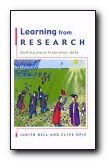sample from HTML program and PDF book
1. Instruction terms are words commonly used in essay questions. They instruct or direct you in the approach you should take towards the proposition of the question.
2. The exact meaning of these terms will vary depending upon the subject being studied. The following give some idea of what they normally mean for essays and examination questions.
3. Think carefully about the meaning of these terms in relation to the remainder of the question. Even though you might feel confident, do not become blasé or inattentive. Sometimes even experienced students forget the important difference between Compare and Contrast.
4. Try to understand exactly what an instruction is asking you to do – but be reasonable. Don’t look for problems where they might not exist. If in doubt, ask your tutor.
GLOSSARY
account for
Explain the reasons for, giving an indication of all relevant circumstances. Not to be confused with ‘Give an account of’ which asks only for a detailed description.
analyse
Study in depth, identifying and describing in detail the main characteristics.
argue
Put forward a proposition, then illustrate it, discuss its significance, and defend it against possible counter-charges.
assess
Examine closely, with a view to ‘weighing up’ a particular situation. Consider in a balanced way the strengths and weaknesses or points for and against a proposition. In conclusion, state your judgement clearly.
comment
State clearly and in moderate fashion your opinions on the material in question. Support your views with reference to suitable evidence or explanations.
compare
Look for similarities and differences between two or more things.
contrast
Deliberately single out and emphasise the differences and dissimilarities between two or more things.
criticise
Give your judgement about a statement or a body of work; explore its implications, discussing all the evidence which is available. Be specific in your examination.
define
Set down the precise meaning of something. Be prepared to state the limits of the definition. Take note of multiple meanings if they exist.
describe
Give a detailed and comprehensive account of something.
discuss
Investigate and examine by careful argument. Explore the implications and the advantages or disadvantages. Debate the case and possibly consider any alternatives. This is probably the most common instruction term. It is inviting you to say something interesting in response to the topic in question. You can choose your own approach.
evaluate
Make an appraisal of the worth of something in the light of its truth or utility. Emphasise the views of authorities as well as your personal estimation.
explain
Make plain. Account for. Clarify, interpret, and spell out the material you present, giving reasons for important features or developments.
how far …
Similar to questions which begin ‘To what extent…‘. You are expected to make your case or present your argument, whilst showing an awareness that alternate or even contradictory explanations may exist. Careful assessment and weighing of evidence are called for.
identify
Pick out what you regard as the key features of something, perhaps making clear the criteria you use in doing so.
illustrate
Make clear and explicit by the discussion of concrete examples.
justify
Show adequate grounds for decisions or conclusions. Answer or refute the main objections likely to be made against them.
outline
Give the main features or the general principles of a subject, omitting minor details and emphasising structure or arrangement.
relate
Show how things are connected, and how they possibly affect, cause, or resemble each other.
review
Make a survey of, examining the subject critically.
state
Present the main points in brief, clear form.
summarise
Give a concise account of the main points of a matter, omitting details and examples.
to what extent … Similar to questions which begin ‘How far …‘. This term is used in questions asking you to show your own judgement. It’s unlikely that there will be a black or white answer. You are expected to argue your case, offering evidence to support your view(s). It also gives you the opportunity to discuss both weaknesses and strengths for a case.
trace
Follow the development or history of a topic from some point of origin.
© Roy Johnson 2003
Buy Writing Essays — eBook in PDF format
Buy Writing Essays 3.0 — eBook in HTML format
More on writing essays
More on How-To
More on writing skills

